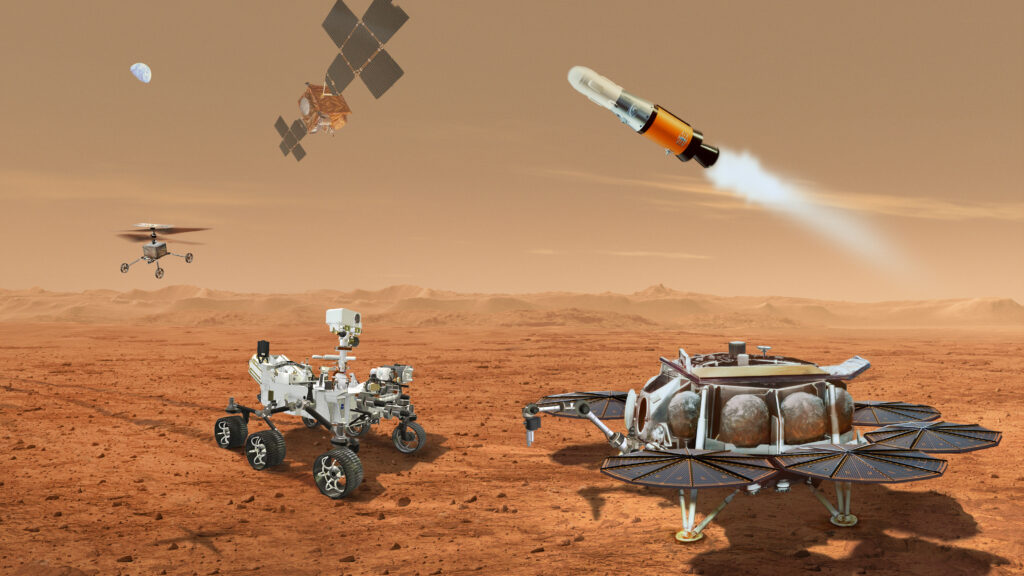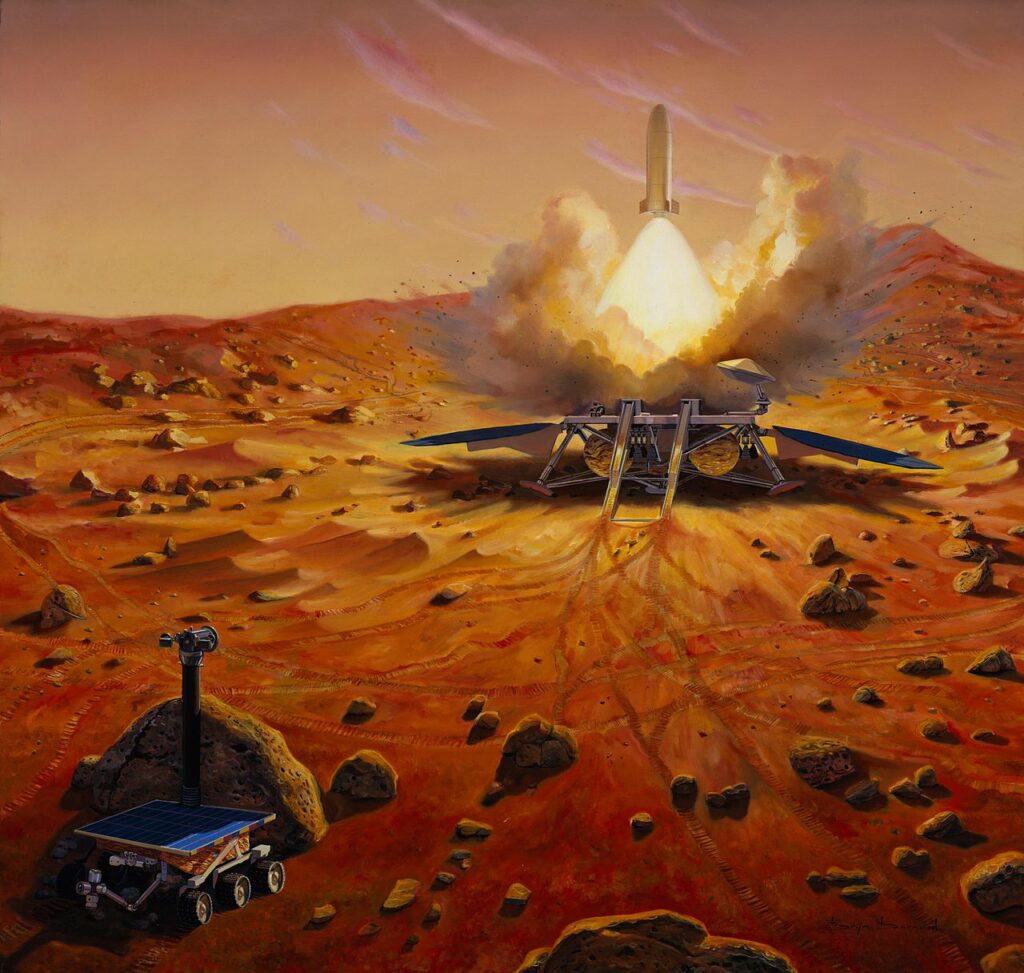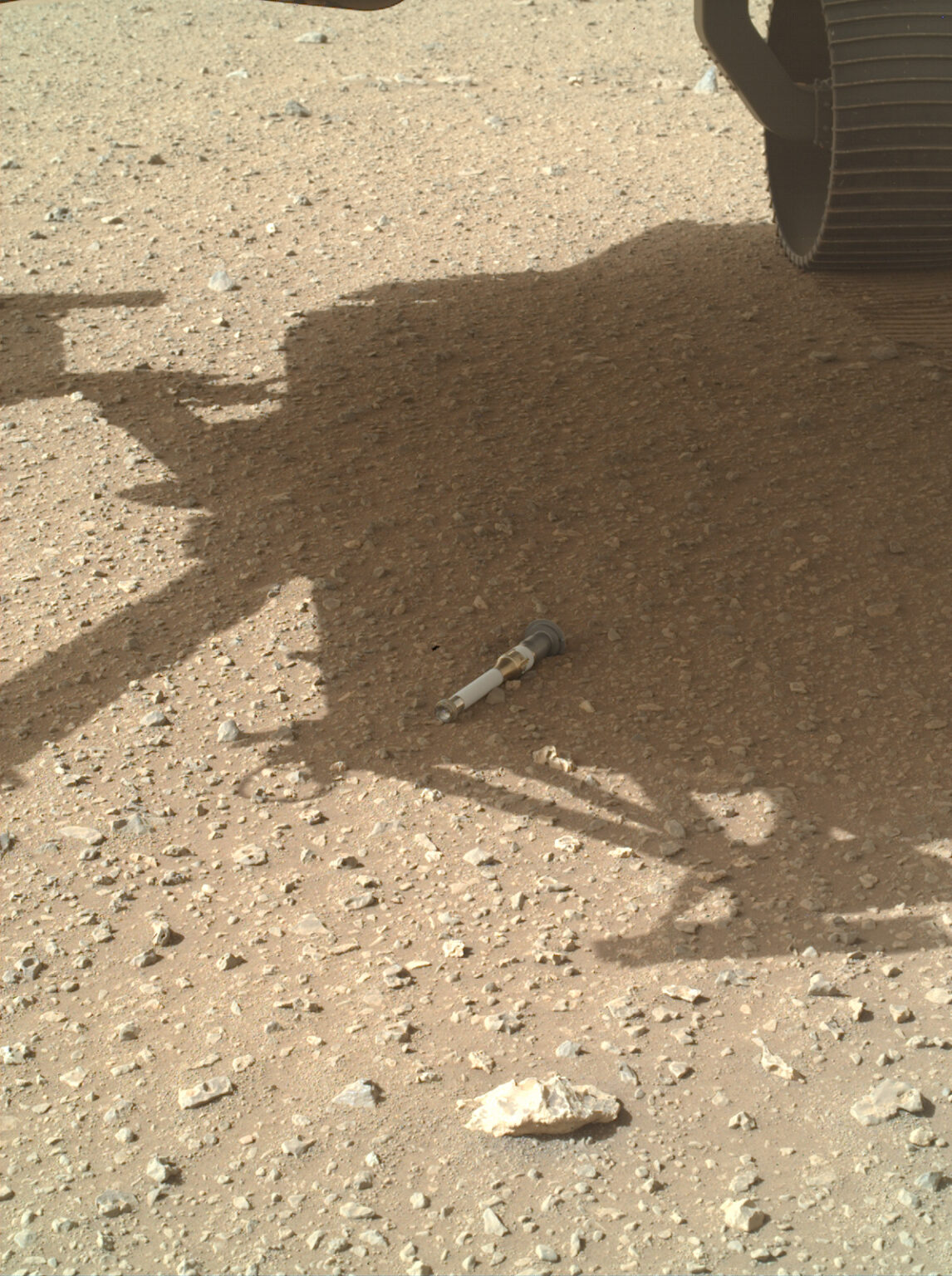NASA published a report prepared by an independent review that examined the progress of the Mars Sample Return (MSR) project. The auditors came to rather disappointing conclusions regarding its prospects.
Mars Sample Return Mission Diagram
The MSR mission is being developed by NASA in collaboration with ESA. Its purpose is to deliver soil samples collected by the Perseverance rover to Earth. The implementation of the project should begin in 2027-2028 with the delivery of samples in 2033.

At the moment, the project plan involves sending several vehicles to Mars. The NASA-built SRL (Sample Retrieval Lander) will have to land on Mars and pick up the sample capsules delivered by Perseverance. Then the take-off module installed on it will perform take-off and enter an areocentric orbit. There it will dock with the ERO (Earth Return Orbiter) probe built by ESA and transfer samples to it. After that, the European spacecraft will leave the vicinity of Mars and set a return course to our planet.
The key question is the cost of such a mission. The assessment carried out in 2020 showed that the cost of its implementation should be from 3.9 to 4.4 billion dollars. But in the future, this amount will only be increased. In the summer of 2023, NASA announced that, according to one estimate, the cost of implementing the mission could double. This news has raised concerns among scientists about the impact of such overspending on other scientific projects. This, as well as budget problems, led NASA to organize an independent audit of the MSR.
Unviable architecture and insufficient funding
The auditors came to rather disappointing conclusions for NASA. In the published report, they concluded that there was “almost zero probability” that the SRL and ERO spacecraft would be ready for launch in 2027 or 2028. The document states that there is currently no agreed technical plan or a properly drawn up schedule that can be implemented with the available funding.

The planned budget of the mission is also insufficient for its implementation. According to experts, the likely cost of the project will be from 8 to 11 billion dollars. The document clearly states that the current architecture of the project is not viable within the currently available funding. At the same time, even its change is unlikely to reduce costs.
The auditors examined several possible options for implementing MSR. The first is to postpone the launch to 2030. In this case, the total cost of the project will be from 8 to 9.6 billion dollars. However, such an approach would require spending more than USD 1 billion a year between 2025 and 2028, which can have a negative impact on other NASA missions.
Another possibility under consideration is to change the architecture of the mission and make greater use of previously used technologies, for example, the “skycrane” system. In this case, the total cost of the MSR will be up to USD 10.9 billion, but with lower annual costs. Its launch may take place in 2035.
The authors of the document also note that the capsules with soil currently on board Perseverance have significantly greater scientific value than the ten samples previously unloaded in the so-called backup storage. This was done in case the rover had already stopped working by the time the SRL arrived and would not be able to deliver samples to it.

But, despite all the identified problems and criticism, the auditor recognized the very high scientific value of the mission. They called on NASA to better inform the scientific community and Congress about its importance.
As for NASA, the organization said in its statement that it would study the report, after which it would make a recommendation regarding the future of MSR. It will be published early next year.
According to https://spacenews.com
Follow us on Twitter to get the most interesting space news in time
https://twitter.com/ust_magazine

